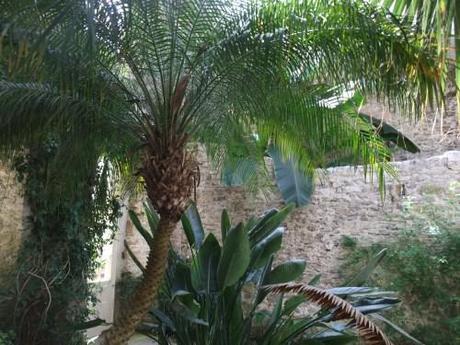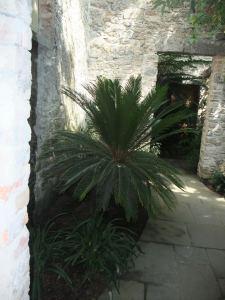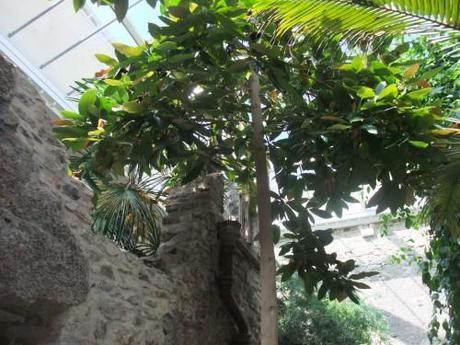
Just before Easter I visited the gardens at Aberglasney in Carmarthenshire, Wales. The property was taken on by a Restoration Trust in the 1990s and they are working on restoring the house and gardens and bringing them back to their former glory, much like the Lost Gardens of Heligan project. I will write about the outside gardens soon but first I wanted to share with you what I, and my family of non-gardeners(!), thought was the highlight of the visit – the Ninfarium.
This garden was built in 2005 by covering the ruined central rooms and courtyard of the mansion with a large atrium. A wonderful indoor space has been created in which a variety of sub-tropical and warm temperate plants including Magnolias, Cycads and Palms are grown.

I found myself wondering about the name, Ninfarium, and initially assumed it was one of those names the Victorians came up! However, on reading the guidebook after our visit the penny dropped. The name is derived from Ninfa a garden situated southwest of Rome. Weirdly I had recently been reading about Ninfa in Monty Don’s book The Great Gardens of Italy which explains why Ninfarium sounded familiar. There is a now a television series to accompany the book and this last week it featured Ninfa and it all made sense. Ninfa is a garden which was created in the early 20th century around a ruined medieval village.

The Ninfarium is one of the most unusual garden spaces I have been in. You feel like you are in some sort of middle eastern oasis. The light filters through the canopy and the thick walls give it a wonderful coolness which was very welcome the day we visited. There is a stillness about the space even with 5 of us crashing around. It is hard to explain but you felt as though you had to speak in lowered tones.
I don’t know who came up with the idea of transforming this space in this way instead of trying to rebuild the interior of the house but it is truly inspired.

